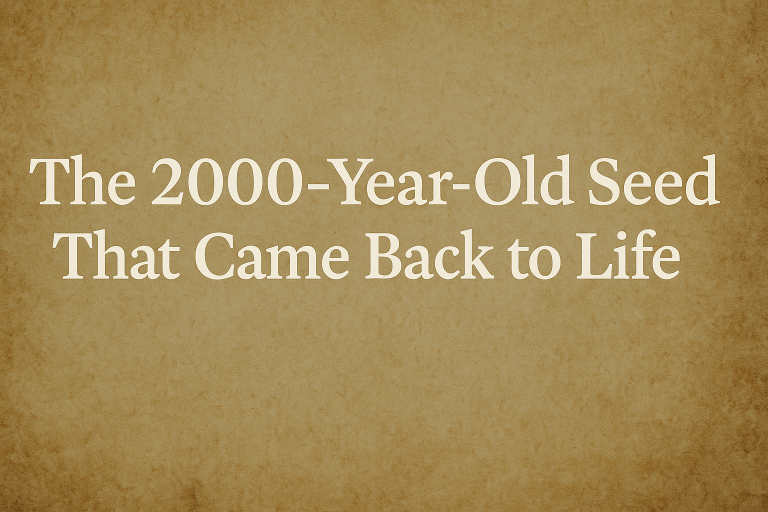For centuries, trees have stood as silent witnesses to the world’s changes—but what if they aren’t as quiet as we think? Emerging research reveals that plants, from towering oaks to delicate ferns, produce vibrations, electrical signals, and even ultrasonic sounds that could be interpreted as their own form of “music.” Scientists, artists, and bioacoustics experts are now tuning into these hidden frequencies, uncovering a world where trees hum, click, and sing in ways imperceptible to human ears.
This article explores the groundbreaking science behind plant vibrations, how researchers are translating them into audible music, and what these discoveries mean for our understanding of plant communication and ecosystem health.
Do Trees Really Make Sounds? The Science Behind Plant Vibrations
1. The Hidden Sounds of Stressed Plants
A 2023 study from Tel Aviv University found that drought-stressed tomato and tobacco plants emit ultrasonic clicks (20-150 kHz)—far beyond human hearing but detectable by specialized microphones. These sounds increase when plants are dehydrated or injured, suggesting they may be a distress signal.
2. How Plants Produce “Music”
-
Cavitation: Air bubbles form and collapse in xylem tubes during water stress, creating vibrations.
-
Cell Wall Movements: As leaves and stems flex, they release subtle acoustic energy.
-
Root Electrical Pulses: Some studies suggest roots generate low-frequency signals as they grow.
3. Who (or What) Listens to Plants?
-
Bats and insects may detect plant sounds to locate water or avoid stressed vegetation.
-
Other plants might “eavesdrop” on these vibrations to prepare for environmental threats.
Turning Tree Vibrations Into Human Music
Artists and scientists have developed innovative ways to make plant “music” audible:
1. The PlantWave Device
-
Uses electrodes to measure bioelectrical changes in leaves.
-
Converts real-time data into piano, strings, or synth sounds.
-
Popular with musicians like Grimes and Mort Garson (who composed an album for plants).
2. Damanhur’s Singing Trees
-
An Italian spiritual community claims trees “sing” when connected to custom MIDI interfaces.
-
Their recordings feature woody, ethereal tones that change with seasons.
3. Data Sonification Projects
-
NASA has translated tree ring data into musical patterns reflecting climate history.
-
Researchers at MIT Media Lab turned photosynthesis rates into ambient soundscapes.
The Ecological Significance of Plant Sounds
1. Early Warning Systems for Drought
-
Farmers could deploy acoustic sensors to detect thirsty crops before visible wilting.
2. Biodiversity Monitoring
-
Healthy forests may have distinct “sound signatures” versus degraded ones.
3. The Myth of the “Screaming” Mandrake
-
Ancient herbology claimed uprooting mandrakes caused deadly screams.
-
Modern experiments show they emit small pops—likely cavitation bubbles bursting.
DIY: How to Hear Your Houseplants “Sing”
Materials Needed
✔ PlantWave or Backyard Brains’ SpikerBox (budget options exist).
✔ Potted plant (try peace lilies or pothos—they’re highly responsive).
✔ Quiet room to minimize interference.
Step-by-Step
-
Clip electrodes to leaves.
-
Open the companion app and select instruments.
-
Water the plant and observe pitch changes.
Pro Tip: Playing “music” back to plants (like classical or 432Hz tones) might boost growth—studies are mixed but intriguing.
Skepticism and Controversies
1. Are We Anthropomorphizing Plants?
-
Critics argue “plant music” is human interpretation, not intentional communication.
2. The Cleve Backster Debacle
-
In the 1960s, a CIA agent claimed plants reacted to human thoughts.
-
His polygraph experiments were later debunked.
3. Commercial Exploitation Risks
-
Some companies sell “plant music” devices with pseudoscientific claims (e.g., “healing frequencies”).
Future Research and Applications
1. Precision Agriculture
-
Drones with ultrasonic mics could scan fields for stressed crops.
2. Eco-Art Installations
-
Projects like “Tree Harp” (UK) let wind play tree vibrations like harp strings.
3. Space Botany
-
Monitoring plant sounds on Mars could reveal hydration issues in colonies.
Conclusion The Silent Forest Myth Debunked
The next time you walk through a forest, remember: you’re surrounded by a symphony of vibrations, from roots conducting electrical pulses to leaves emitting ultrasonic SOS calls. While we’re just beginning to decode this language, one thing is clear—trees are anything but silent.
Whether you’re a scientist, musician, or curious gardener, tuning into plant “music” deepens our connection to the living world in ways we’re only starting to imagine.




Leave a Comment